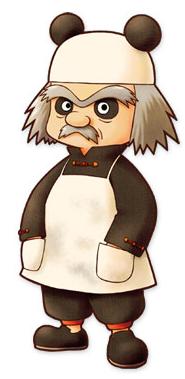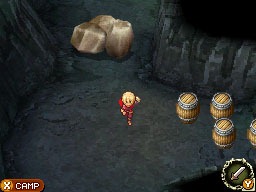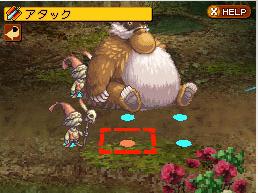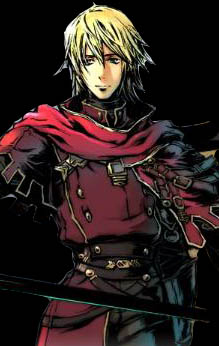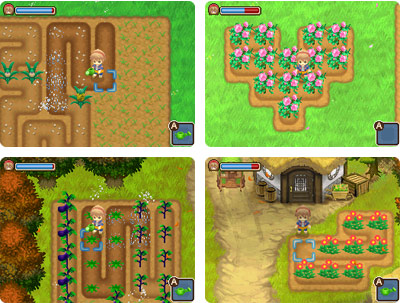 Yes it’s strange, isn’t it? Before Bokujou Monogatari: Futago no Mura
Yes it’s strange, isn’t it? Before Bokujou Monogatari: Futago no Mura came out I posted about how excited I was and how I couldn’t wait for the game to come out, blah blah blah. Then once it came out, I made one first post and then…nothing. And if someone hadn’t commented asking me about it, it would have stayed as nothing because, quite frankly, I didn’t like the game.
Well, so why didn’t I post saying so? First of all, it was hard for me to admit to myself that a game in one of my all-time favorite series, and a game I’d been looking forward to for so long, actually kind of sucked. I played the game for about 5 in-game years, longer than I’ve played most other Harvest Moon games, because I was waiting and hoping that it would suddenly get interesting, that the light would suddenly go on in my head and I’d fall in love with it. When that didn’t happen, I decided to go for plan B: stop playing the game for several months, start all over again and see if you can discover the missing magic. That’s what I was working on when I was asked to comment, so if I do play Harvest Moon: Twin Villages again and suddenly like it, I’ll be sure to post about it.
Now the second, and equally valid reason why I haven’t posted about this earlier is: the game isn’t that bad. ‘Cos you know, if you hate a game, the words just flow off your keyboard, you can’t wait to bash it. If you love it, it’s the same, you can’t say enough good things about it. But if it’s merely average, or in this case rather less than average, it’s like…okay…what do I say…should I even bother? Does it deserve my time? Let me just move on and play something better, etc, etc. So I’ll put this out there from the start: Harvest Moon Twin Villages is not a terrible game. It’s just boring, repetitive, predictable and uninspired.
Before I go into the details, I’ll just mention the one thing I did like, and that was the ability to farm in rows. See the way the land is shaped in the pictures up there? By pressing and holding a button (I think it was A?) when you’re tilling your field, you can plant your crops in a row instead of on individual spots. What that means is that when you water one plant in the row, you water all of them as far as the water in your can will allow. This saves a lot of time and effort when watering. Plus it looks really cool. In the same way if you stick a bottle of fertilizer into your field, it affects all the crops in the row instead of just those in the immediate squares. I really liked that innovation, it made farming a whole lot easier.
Now for everything I didn’t like. And there’s a lot of it. In order not to make this a huge block of text, I broke them up into four main divisions: Boring, Random & Restrictive and Repetitive. There’ll be some overlap between the four, which is why I put Random and Restrictive together, but in general that’s how I saw things.
Random and Restrictive
1. How you progress the story – The story behind this game is that two villages, Bluebell and Konohana, are at loggerheads with each other (except not really, they’re actually quite friendly). As a result, the Harvest Goddess got angry at the bickering several years ago and blocked up the tunnel under the hill that they used to go back and forth. Now she wants you to get everyone back together and happy again and to reopen the tunnel. (If you’ve played Rune Factory 3, this reunion mission might sound vaguely familiar). Fine, okay.
Unfortunately, the only way you can get the villages together again is by winning a series of cooking contests which are held a few times a month. After you bring them together enough, the local engineer Airin decides to reopen the tunnel, which she only does in stages every couple of months or so, whenever she feels like it. So the story can only progress in a very specific way at very specific times, and if you miss those moments, you have to wait even longer to get anywhere. Alrighty then.
2. Winning the cooking festival – What got my goat, then, was that winning the festival wasn’t up to your own skill. It was largely based on luck. You compete in the festival in randomly chosen teams of three. One week you, Ayame and Chihiro go up, the next week it’s you, Gonbei and Kiriku, etc. You can’t control who’s going to be on your team and you can’t control the quality of the food they’re going to present. So you can spend the whole month lovingly growing and tending your crops to grow the best vegetables you can, raising your animals’ love levels so they give the best milk and eggs. Prepare lovely tasty dishes that Pierre will simply adore. Present them. Then Mao or someone else will present some burnt crap, ruin your score and let the other village win, just like that. You still build some village rapport when you lose, but it slows you down a lot, not to mention pisses you right off.
3. What upgrades you get – This is the big one, which probably did the most to spoil this game for me. In most Harvest Moon games, there’s a lumberjack or whatever you call him. When you have enough lumber/material and money to upgrade something on your farm, you go see him and you upgrade, simple. Additionally, there might be quests to do in the beginning to get the fishing rod, hoe, axe, etc, but once you have them you can usually upgrade them whenever you’re ready. Cool.
Not so in Twin Villages. There’s a quest board available and if you want an upgrade to your farm or to a tool, you have to check the message board at the beginning of the month. Find the upgrade quests Airin and Shenlow have posted. Go see them and they’ll let you pick ONE upgrade you want done, even if you can afford 2000 upgrades. You pay up, have that upgrade done, and then you have to wait (im)patiently until the next month to get another chance to pick another upgrade. Just one. And you can’t get makers (cheese, wool, etc) until you’ve upgraded a certain number of times, which slows your progress even further.
Accordingly, both your facilities and your farming/ranching tools only grow very, very slowly, leaving you steaming and fuming for the rest of the month. I know they did it to extend the longevity of the game, but instead it just feels like forced and senseless slowdown and makes Airin and Shenlow look like the laziest <bleeping> pieces of <bleep> in Harvest Moon history. What in the world are they doing for the rest of the month?
3b. While I’m on the subject of restrictiveness, the game makes things even harder by specifying certain levels of items you can use. In the beginning any kind of stone or lumber will do, but later on Shenlow might say he wants only moonstones that are 2.0 stars and above. Oh, too bad you can’t mine them. And don’t bother jumping in the waterfall either, anything you get (at a much lower drop rate than Grand Bazaar), will never be more than 0.5 stars. Your only hope is to try your bad luck in the intervillage tunnel once you’ve opened it up fully, and such high level ores don’t appear until the 4TH YEAR of game play. Yes, you read that right. Fake longevity, anyone?
4. What seeds/items are available for sale -Yes, the pain doesn’t end there. Twin Villages also randomizes the items available in the general store (the one run by the Mexican siblings) and the seed store run by Gonbei. Let’s say you want to plant some cucumbers at the beginning of the spring. Unfortunately you don’t have any cucumber seeds left over from last season, or you haven’t gotten the seed maker yet ‘cos Shenlow and Airin are…no comment. So, full of hope, you run down and check Gonbei’s store, but he only sells 3 random types of seed every day. No cucumbers for you today. Today it’s turnips, potatoes and cabbages. No problem, I’ll come back tomorrow. Nope, no cucumbers for you then. Okay, next day. Oh no, he’s not open that day. Next day, holiday. Next day, still no cucumbers for sale. Want some turnips? Next day, it’s raining so he’s not open. It can be days before you finally get those cucumbers to plant, by which time you’ve probably filled your field with something else.
The same goes for the general store. They do keep feed for your pets in stock regularly, but that’s about it. It can take ages for you to find rice on sale, or oil on sale, or curry on sale, or flour. These things all go bad sooner or later in your storehouse, so you can’t just buy 99 of each every time and hang on to them. You have no idea how frustrating it is to want to make a recipe in time for the cooking contest or just for fun and neither store in Bluebell or Konohana will stock the one item you need to make it. I mean, at least for the seed store you eventually get a seed maker, but you never get an oil press or a curry maker so it’s just Graaaaargh!!!
5. Random store closings – Oh, you thought that was all? Guess what, not only are the storekeepers flighty enough to stock only what they feel like stocking, but they’re also lazy enough to close up shop all day when it rains. Even if it’s not their day off, they just don’t work when it rains, full stop. When you couple that with their weekly day-offs, the festival closings and the just-documented difficulty in finding a particular item in the stores, you can see just how annoying it can get. Maybe Marvelous was trying to promote ‘strategic’ gameplay, or maybe they were trying to keep an element of surprise in your day-to-day affairs. I don’t know. All I know is, I hated those storekeepers so, so much. So much.
Okay, this post is getting a bit too long. I’ll rant about the other things next time. Or maybe I won’t and this is representative enough of why I had a poor time with this game. I wanted to like it, but it didn’t want to be liked by me. Oh well.
